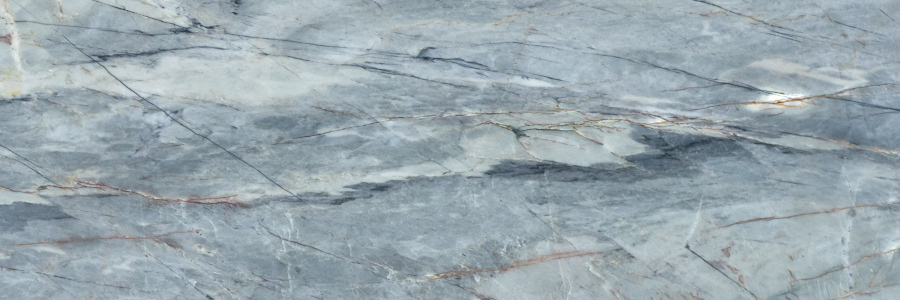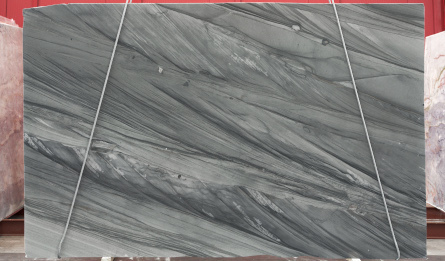
We’ve often wondered why natural stones, i.e. marble, granite, quartzite, or similar natural materials, are not the first choice when it comes to building a house or other buildings.
Why do many people still prefer granite floors and granite wall cladding or kitchen countertops and vanity tops made of marble or natural stone, even though the market offers so many alternative artificial products?
In seeking answers to this question, we can be helped by the article that anthropologist Emanuela Borgnino published in "Il Manifesto" on February 15, 2024.
Among other things, we learn in this article that by tradition, some indigenous peoples consider stones to be alive: they are born, they live, and they die.
History and myths of natural stone
Apart from the symbolic meaning, we can say, based on our work experience, that natural stone is alive, it ages and changes in different ways, whether it is placed indoors or outdoors.
Certainly, stones were born and have lived.
Each type of rock has its own genesis: stone is formed by deposits of limestone, sand or organic material, marble by chemical and physical transformation of existing material, and granite by the slow cooling of lava in the earth's crust.
But where geology ends, traditions, myths and religions may help us to give meaning or to justify our often so modern way of acting, which we consider rational, but actually is not.
Natural stone has been part of human life since human creation; in many cultures, they are seen as powerful, animated, living things rather than objects.
Marble, granite, and natural stones are not only building materials and the foundation of material cultures, but also the basis of spiritual culture.
It is no coincidence, that our company was founded in the province of Verona, where the use and processing of stone has been widely used for thousands of years: from the caves where the shaman of Fumane lived, to the Arena, the great cathedrals, the stone demarcations, and the stone roofs in Lessinia, which seem to create magical landscapes.

On the one hand we have the myths about natural stone, on the other hand the spiritual part.
The three major monotheistic religions, for example, attach great importance to the world of stone:
- in the Christian good news, we learn: "You are Peter (which in the masculine form means stone or pebble in Greek and is called kefa in Aramaic), and on this rock (in the feminine form it does not mean stone but rock) I will build my church";
- for Muslims, the Black Stone of Mecca is an important pilgrimage destination;
- among the Jews, stone is translated by the Hebrew word "even", deriving from the union of the words "Av" (=father) and "Ben" (=son) (the word symbolizes the close bond between them and the memory of the father in an uninterrupted transition to the son), therefore the pebbles that the Jews traditionally place on the tombstones to commemorate their dear departed, are also meant to remind of the origin of the Jewish people.
In Greek mythology (other indigenous peoples also believe that stones create life), a legend tells that a human couple, saved by the Gods after the Flood, repopulate the world by throwing stones behind them on their way, which then turn into humans when touching the ground.
As far as Europe is concerned, Borgnino's article states that it was not until the 13th century that the German philosopher Albertus Magnus refuted the idea that stones had a soul: a clear sign that natural stones had been given a spiritual connotation until then.
If significant civilizations have expressed their greatness with the help of natural stones, this is, in our opinion, a sign that there are archetypal images, marks of origin and primitive and affective universal forms when it comes to rocks, stones, marble, and granite, which are deeply imprinted in our soul, preceding us, and overtaking us.
For this reason, the material choice for one's own house or for other buildings has a deeper meaning than we can imagine. In fact, choosing marble or granite indicates a deep and spiritual connection with the earth.
Why should you choose a natural stone to design your space?
Natural stone is a product of our planet, extracted in quarries and minimally treated to preserve its original beauty. Marble, granite, slate, quartzite, and travertine are just a few of the many varieties available, each material having its own unique veins, colours, and features.
Natural stone has been used since ancient times to build and embellish our living spaces. From the palaces of the Egyptian pharaohs to modern kitchens, natural stone has survived centuries without ever losing its charm.
Natural stone is an excellent choice for interior and exterior decoration thanks to various characteristics.
These include:
- Uniqueness: no stone slab resembles the other, this individuality adds a touch of exclusivity to any setting, whether it concerns floors, walls, or countertops;
- Durability: natural stone stands up to time, it is particularly resistant to heat and scratches and, if properly treated, even to stains, making it ideal for high-traffic spaces as well as areas like kitchens and bathrooms;
- Versatility: natural stone fits to many furnishing styles, from country-style to modern, a polished surface provides a refined look, while an unfinished surface will give a more natural and organic touch to the setting;
- Versatility: natural stone fits to many furnishing styles, from country-style to modern, a polished surface provides a refined look, while an unfinished surface will give a more natural and organic touch to the setting.
Investing in natural stone may increase the resale value of a property, as its timeless nature is a key advantage on the real estate market.
Use of natural stone indoors and outdoors
In modern design, there is a tendency to use large stone slabs that create continuous and homogeneous surfaces. A further trend is the use of natural stone with rough or antique finishing, especially when it comes to connecting the interior with the exterior.
Modern technology makes it possible to cut natural stone into very thin slabs, which are more lightweight and flexible for new applications, e.g. for furniture or door coverings.
In interior design we find natural stone in:
- Kitchen: thanks to their robustness and easy cleaning, granite or marble countertops are a popular choice, a quartzite kitchen island can become the centre of a modern kitchen;
- Bathroom: marble, with its unique nuances and veins, is often used to create refined and bright settings.
In exterior design we find natural stone:
- as floor tiles and cladding: natural stone is perfect for a long-lasting floor, as it offers many colours and different surface finishings; wall cladding made of slate or travertine adds depth to any room and is an eye-catcher;
- on terraces or paths and as façades: natural stone blends harmoniously into the outdoor environment and withstands weather conditions and frequent passing traffic.


